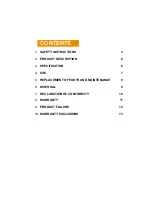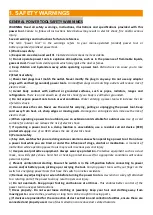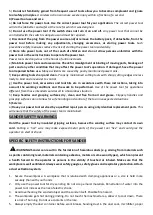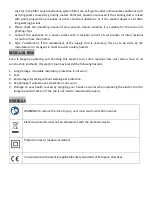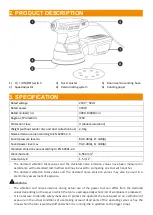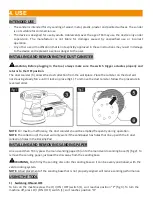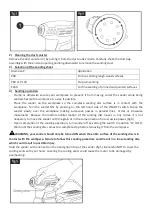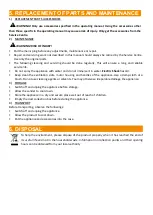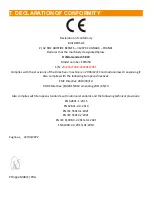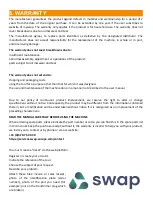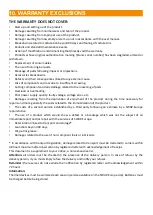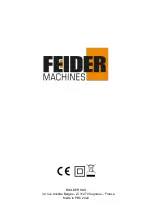
h)
Do not let familiarity gained from frequent use of tools allow you to become complacent and ignore
tool safety principles.
A careless action can cause severe
injury within a fraction of a second.
4) Power tool use and care
a)
Do not force the power tool. Use the correct power tool for your application.
The correct power tool
will do the job better and safer at the rate for which it was designed.
b)
Do not use the power tool if the switch does not turn it on and off.
Any power tool that cannot be
controlled with the switch is dangerous and must be repaired.
c)
Disconnect the plug from the power source and/or remove the battery pack, if detachable, from the
power tool before making any adjustments, changing accessories, or storing power tools.
Such
preventive safety measures reduce the
risk of starting the power tool accidentally.
d)
Store idle power tools out of the reach of children and do not allow persons unfamiliar with the
power tool or these instructions to operate the power tool.
Power tools are dangerous in the hands of untrained users.
e)
Maintain power tools and accessories. Check for misalignment or binding of moving parts, breakage of
parts and any other condition that may affect the power tool’s operation. If damaged, have the power
tool repaired before use.
Many accidents are caused by poorly maintained power tools.
f)
Keep cutting tools sharp and clean.
Properly maintained cutting tools with sharp cutting edges are less
likely to bind and are easier to control.
g)
Use the power tool, accessories and tool bits etc. in accordance with these instructions, taking into
account the working conditions and the work to be performed.
Use of the power tool for operations
different from those intended could
result in a hazardous situation.
h)
Keep handles and grasping surfaces dry, clean and free from oil and grease.
Slippery handles and
grasping surfaces do not allow for safe handling and control of the
tool in unexpected situations.
5) Service
a)
Have your power tool serviced by a qualified repair person using only identical replacement parts.
This
will ensure that the safety of the power tool is maintained.
SANDER SAFETY WARNINGS
Hold the power tool by insulated gripping surfaces, because the sanding surface may contact its own
cord.
Cutting a "live" wire may make exposed metal parts of the power tool "live" and could give the
operator an electric shock.
SPECIFIC SAFETY INSTRUCTIONS FOR SANDER
WARNING! Sander can result in the formation of hazardous dusts (e.g. arising from materials such
as paints containing lead, materials containing asbestos, metals or some wood types), which can present
a health hazard to the operator or persons in the vicinity if touched or inhaled. Make sure that the
workplace is well ventilated. Always wear safety googles, safety gloves and respiratory protection. Attach
a dust extraction system.
1.
Secure the workpiece. A workpiece that is retained with clamping appliances or a vice is held more
securely than with your hands.
2.
Only use the power tool for dry sanding. Do not scrape moist materials. Penetration of water into the
power tool increases the risk of electric shock
.
3.
Avoid overheating the sanded object and the sander itself. Possible fire hazard.
4.
The workpiece gets hot during grinding. Do not touch the machined area, allow it to cool down. There
is a risk of burning. Do not use coolants or the like.
5.
Always empty the dust container before work breaks. Sanding dust in the dust sack, microfilter, paper


